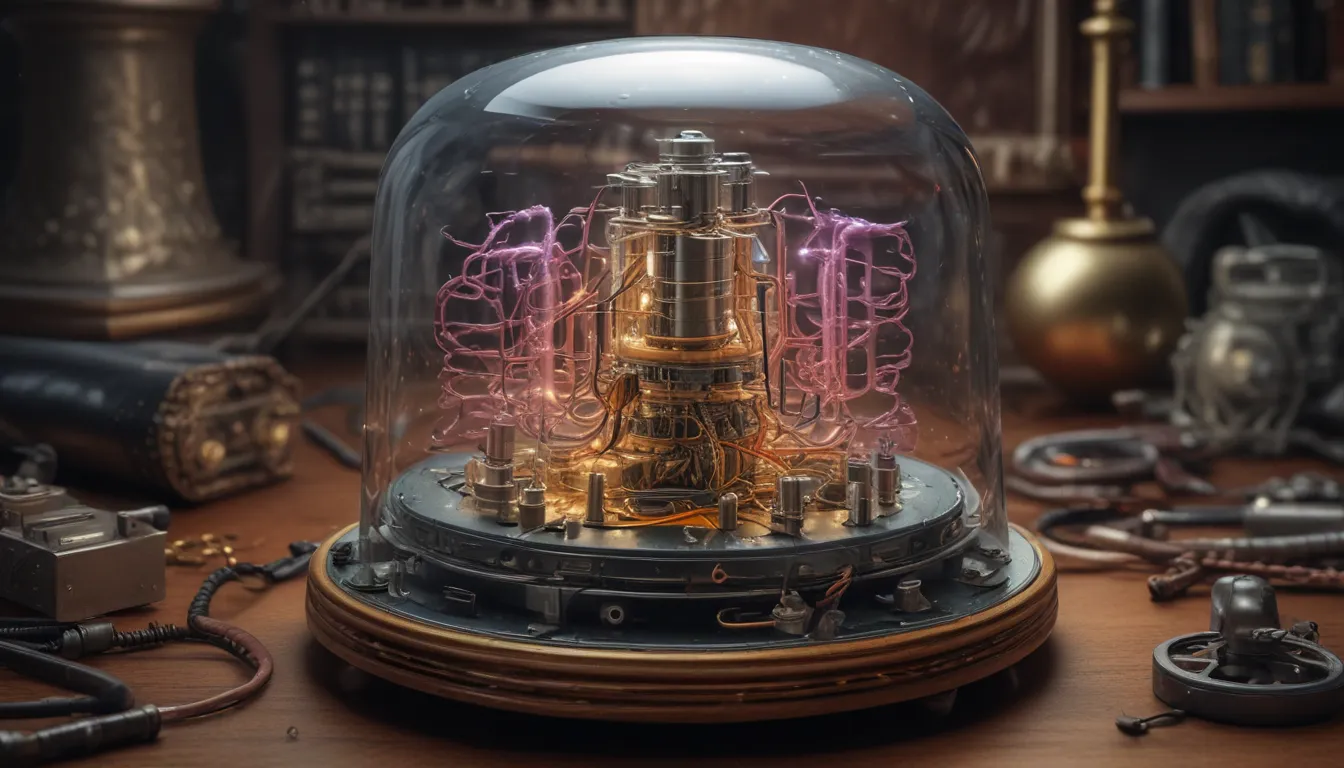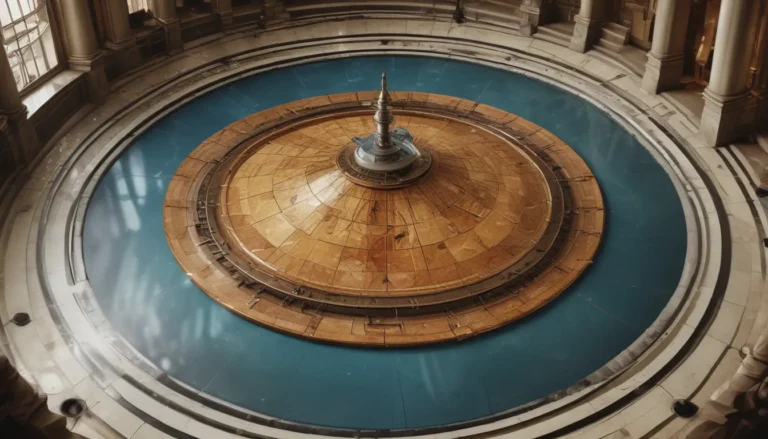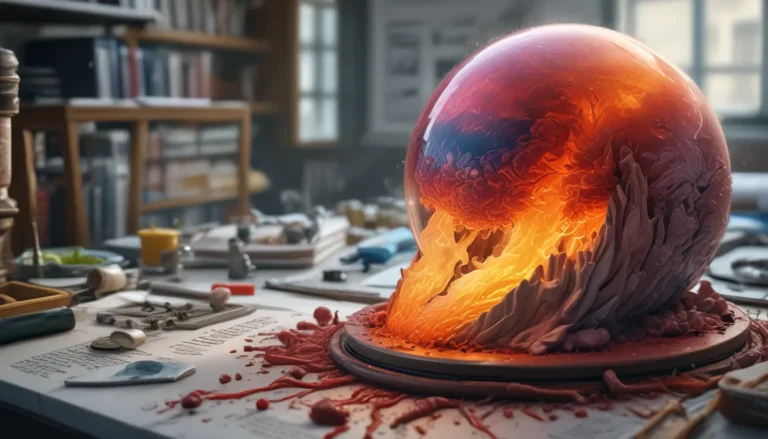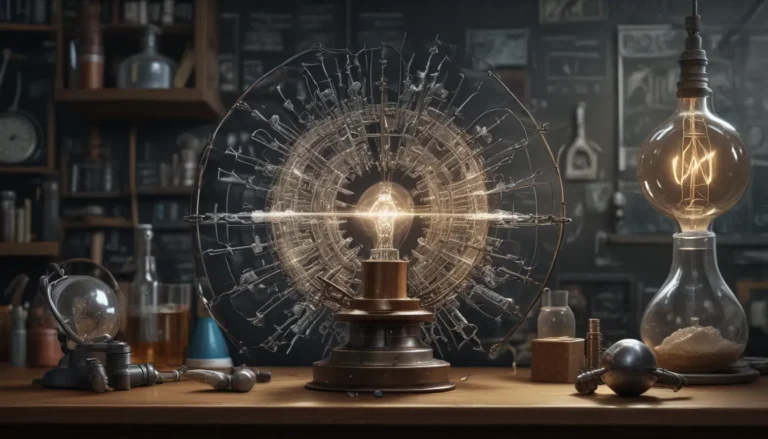A Note About Images: The images used in our articles are for illustration purposes only and may not exactly match the content. They are meant to engage readers, but the text should be relied upon for accurate information.
Are you curious about the inner workings of electricity and how it interacts with resistance? Look no further than Joule’s Law of Electrical Resistance, a fundamental principle discovered by the esteemed physicist James Prescott Joule. This law uncovers the intricate relationship between electric current, resistance, and the heat generated in a circuit.
Let’s embark on a journey to unravel the mysteries surrounding Joule’s Law of Electrical Resistance. Throughout this article, we will explore 17 unbelievable facts about this essential law, shedding light on its historical significance, practical applications, and real-world implications. So, get ready to delve into the fascinating realm of physics as we uncover the secrets of electrical resistance!
Unearthing the Origins of Joule’s Law
In the mid-19th century, James Prescott Joule conducted groundbreaking experiments that led to the discovery and formulation of Joule’s Law of Electrical Resistance. Through his meticulous research, Joule uncovered the intricate relationship between electrical current, resistance, and heat generation, laying the foundation for modern electrical systems.
The Synergy Between Ohm’s Law and Joule’s Law
Ohm’s Law and Joule’s Law of Electrical Resistance are closely intertwined, providing a comprehensive understanding of how electricity behaves in circuits. While Ohm’s Law defines the relationship between current, voltage, and resistance, Joule’s Law reveals how this interaction results in the generation of heat.
Unveiling the Mathematical Equation
Joule’s Law of Electrical Resistance is mathematically expressed as E = I^2 * R * t, where E represents energy, I is current, R is resistance, and t is time. This equation allows engineers and physicists to calculate the heat generated by electric current passing through a resistor over a specific duration.
Harnessing the Power of Conversion
Joule’s Law illustrates the transformation of electrical energy into heat energy as current flows through a resistor. This conversion highlights the importance of understanding and managing heat dissipation in electrical systems to ensure efficiency and safety.
Real-World Applications
From toaster heating elements to incandescent light bulbs, Joule’s Law of Electrical Resistance finds practical applications in various everyday devices. By utilizing the concept of resistance, engineers can design and optimize electrical systems for maximum efficiency and effectiveness.
The Quest for Efficiency
Efficiency is a key aspect emphasized by Joule’s Law of Electrical Resistance. By minimizing energy loss due to resistance, engineers strive to enhance the efficiency of electrical systems, leading to advancements in materials and technologies that reduce energy wastage.
Embracing Limits to Efficiency
Despite continuous efforts to improve efficiency, electrical systems can never achieve 100% efficiency due to the inherent nature of resistance. Engineers and scientists work diligently to optimize efficiency while minimizing energy loss, driving innovation and advancements in the field.
Designing Circuits with Precision
Joule’s Law of Electrical Resistance plays a pivotal role in circuit design by ensuring that electrical components can handle the desired current without overheating. This understanding of the relationship between current, resistance, and heat generation is essential for designing safe and reliable circuits.
Enhancing Power Distribution
In power distribution systems, Joule’s Law has significant implications for minimizing energy loss and optimizing efficiency. By carefully designing and maintaining power grids, engineers can ensure efficient power transmission while reducing heat dissipation.
Safeguarding Electrical Systems
Understanding Joule’s Law of Electrical Resistance is crucial for ensuring the safety of electrical systems. By comprehending the relationship between current, resistance, and heat generation, precautions can be taken to prevent overheating and potential hazards in circuits.
Selecting Materials Wisely
Different materials exhibit varying levels of resistivity, influencing their ability to conduct electrical current. By choosing materials with appropriate resistivity, engineers can design circuits that meet specific requirements and function efficiently.
Adapting to Temperature Variations
The temperature dependence of resistance, particularly in metals, underscores the impact of temperature fluctuations on electrical circuits. This phenomenon is essential for designing reliable electronic systems that can withstand varying environmental conditions.
Choosing the Right Wire Gauge
The thickness of a wire, known as wire gauge, directly affects its resistance to electrical current. Selecting the appropriate wire gauge is crucial in electrical installations to minimize energy loss and ensure that wires can handle specific current loads efficiently.
Mastering the Inverse Relationship
Joule’s Law of Electrical Resistance demonstrates the inverse relationship between resistance and current. By understanding this relationship, engineers can control and manage electrical circuits effectively, optimizing performance and efficiency.
Unveiling Power Loss
Joule’s Law is intricately linked to power loss in electrical systems, as the heat generated due to resistance corresponds to the power dissipated in the circuit. By minimizing power loss through efficient design and technology, energy conservation becomes achievable.
Harnessing the Power of Electronic Components
Electronic components, such as resistors and capacitors, rely heavily on Joule’s Law of Electrical Resistance to regulate current flow and voltage levels in circuits effectively. By understanding and applying this law, engineers can design electronic systems that meet specific requirements and perform optimally.
Embracing Continuous Innovation
Advancements in materials, technologies, and engineering practices have propelled our understanding and utilization of Joule’s Law of Electrical Resistance to new heights. Scientists and engineers continue to innovate and develop methods that enhance efficiency and reduce energy waste in electrical systems.
Inspiring a Curiosity for Exploration
The captivating world of physics and electricity awaits those who dare to explore its mysteries. By delving into the fundamental principles governing electrical resistance, you can gain a deeper understanding of the remarkable relationship between electric current and heat generation. Let your curiosity guide you as you embark on a journey of discovery through the wonders of science.
Conclusion: Empowering Knowledge and Understanding
Joule’s Law of Electrical Resistance serves as a cornerstone in the realm of physics, illuminating the intricate connections between electrical resistance, current flow, and heat generation. By uncovering the secrets and applications of this fundamental law, engineers, physicists, and enthusiasts alike can deepen their understanding of electricity and its impact on modern technologies.
In closing, the 17 unbelievable facts about Joule’s Law of Electrical Resistance presented in this article shed light on the significance and practical relevance of this essential principle. From mastering the equation governing Joule’s Law to exploring its real-world applications, we have journeyed through the fascinating realm of electrical resistance and its implications.
By embracing the concepts and knowledge shared in this article, you can enhance your understanding of Joule’s Law of Electrical Resistance and its pivotal role in modern technologies. Whether you are a student, an engineer, or simply a curious individual intrigued by the wonders of physics, the insights gained from this exploration will enrich your perspective on the world around you.
FAQs: Exploring Common Queries
Q: What is Joule’s Law of Electrical Resistance?
A: Joule’s Law states that the heat generated in a conductor is directly proportional to the square of the current passing through it and the resistance of the conductor.
Q: Who discovered Joule’s Law of Electrical Resistance?
A: Joule’s Law was first formulated by the English physicist James Prescott Joule in the mid-19th century.
Q: How is Joule’s Law applied in real-world scenarios?
A: Joule’s Law finds applications in electric heating, circuit design, and power transmission, aiding engineers in managing heat dissipation effectively.
Q: How does resistance affect the flow of current according to Joule’s Law?
A: Increased resistance in a circuit leads to more heat generation as current flows through, dissipating energy in various forms.
Q: Can Joule’s Law be used to calculate power consumption?
A: Yes, Joule’s Law enables the calculation of power consumption by determining the amount of heat generated and subsequently the power consumed in a circuit.
Explore the Boundless Horizons of Physics
The quest for knowledge and understanding knows no bounds, especially when it comes to exploring the mysteries of physics and electricity. Dive deeper into the captivating realm of Joule’s Law of Electrical Resistance, where wonders await those who dare to seek them. From the complexities of electrical circuits to the fundamental principles shaping our universe, there’s always more to discover. Don’t miss out on the opportunity to expand your horizons with our exploration of Joule’s Law of Electrical Heating, revealing the intricate dance between electric current and heat generation. Let your curiosity guide you as you embark on a journey of discovery through the captivating world of science.
Cultivating Trust through Quality Content
We are committed to delivering trustworthy and engaging content that enriches your understanding and fuels your curiosity. Each fact on our site is contributed by individuals like you, bringing a diverse range of insights and information to our platform. Our dedicated editors rigorously review each submission to ensure the highest standards of accuracy and reliability, guaranteeing that the facts we share are not only fascinating but also credible. Trust in our commitment to excellence and authenticity as you explore, learn, and grow with us.
By embracing the wonders of physics and delving into the captivating realm of Joule’s Law of Electrical Resistance, you can expand your knowledge, deepen your understanding, and uncover the profound mysteries of electricity. Let curiosity be your guide as you navigate through the complexities of electrical resistance and witness the remarkable interplay between current flow and heat generation in the realm of physics. Embark on a journey of exploration, discovery, and enlightenment as you unravel the secrets of Joule’s Law and its enduring relevance in the modern world.






